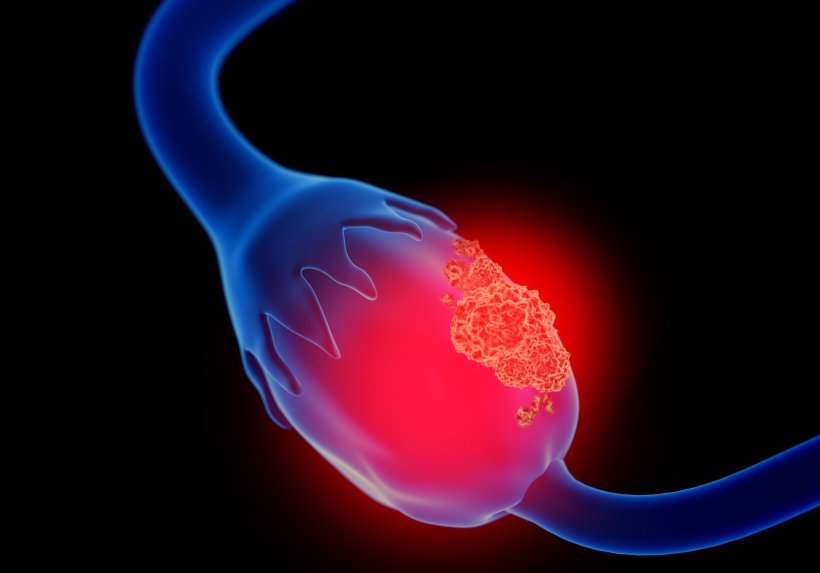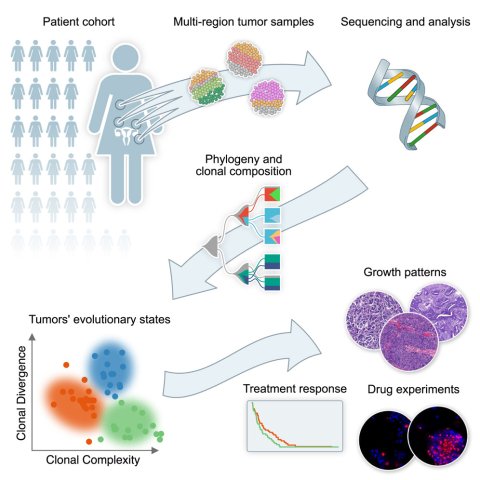
Image source: Adobe Stock/Lars Neumann
News • Potential for new treatments
Researchers find new subtypes for ovarian cancer
New research findings based on the evolution of malignant tumours increase our understanding of the characteristics of an ovarian cancer subtype that is difficult to treat. The findings may also make it easier to effectively target therapies at the right patients.
The researchers published their findings in the journal Cancer Cell.
Every year, approximately 400 women die of ovarian cancer in Finland, while the corresponding figure for Europe overall is more than 40,000. Ovarian cancer is a genetically very heterogeneous disease, which makes it exceptionally difficult to study and treat. The prognosis is particularly poor in ovarian high grade serous carcinoma (HGSC), a subtype of ovarian cancer. Less than 40% of patients with this subtype survive five years after their diagnosis.
Prior studies have not identified generally accepted subgroups of HGSC tumours that would enable targeted treatment in the same way as, for example, in breast cancer
Sampsa Hautaniemi
The researchers were able to classify HGSC tumours into three groups on the basis of genomic changes. The groups differ in the intracellular signalling pathways, the ways in which the tumours grow, and response to treatment. The findings can help therapies to become more accurate and help patients with HGSC. “Prior studies have not identified generally accepted subgroups of HGSC tumours that would enable targeted treatment in the same way as, for example, in breast cancer. Our study is a step forward in identifying effective targeted therapies,” says Professor of Systems Biology Sampsa Hautaniemi from the University of Helsinki.
The researchers analysed genomics data on cancer tumours collected in the DECIDER project from 148 patients with HGSC treated and recruited in Turku University Hospital. Depending on the stage of development, they divided the tumours into three evolutionary states: evolving, maintaining and adaptive. The classification was based on the tumours’ pattern of spread and their development in metastases. Depending on the group, the cancer populations grew up in combinations of either genetically different or clonal cells. These combinations either continued to evolve in metastases or remained unchanged.

Image source: Lahtinen et al., Cancer Cell 2023 (CC BY 4.0)
The researchers identified signalling pathways characteristic of each tumour group, which make these tumours biologically distinct. “There are targeted drugs already in clinical use for many of them. We demonstrated that a single signalling pathway, PI3K/AKT, is particularly important for certain patients. While the importance of this pathway has been known, it was not known who are most likely to respond to treatment targeted at this signalling pathway. Based on our findings, we are better able to identify the subset of patients likely to benefit from such treatment,” says Postdoctoral Researcher Jaana Oikkonen from the University of Helsinki.
The study approaches the issue from the perspective of tumour evolution, or how the tumour develops and spreads into new metastases. This approach is currently important in research on HGSC as the knowledge available is largely based on studies with small sample or patient numbers. “The dataset we analysed was one of the largest, if not the largest, to date in terms of HGSC tumour samples. This is yet another indication of the capacity for top-level research in Finland in spite of our small population,” Hautaniemi says.
“Our findings bring order to the genomic chaos of HGSC. Now, the entire research field will advance faster, making it easier to target therapies. Of course, there is still work to be done. Further research is being carried out on, for instance, what would be the easiest way to classify patients into the three groups identified,” says Postdoctoral Researcher Alexandra Lahtinen from the University of Helsinki.
The joint study was carried out by the University of Helsinki, Turku University Hospital, HUS Helsinki University Hospital, the University of Turku and the Danish Cancer Society Research Center.
Source: University of Helsinki
22.05.2023











